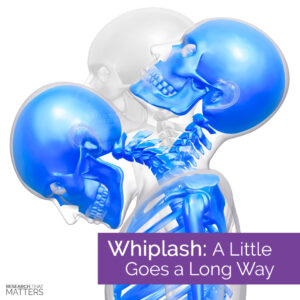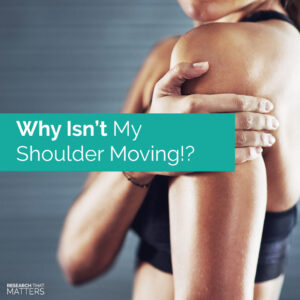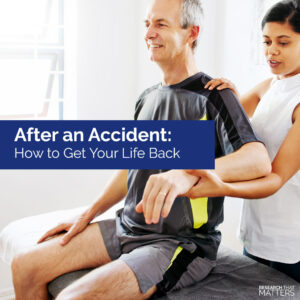section-02280fe
What Happens to My Body During a Car Accident?
 Bottom Line:
Bottom Line:
Your body wasn’t designed to deal with the forces that occur in a car accident. Even though modern cars have an array of safety features, the damage from an accident can range from small aches to life-changing injuries. The force that both your vehicle and body absorb while driving along the road is known as kinetic energy. Your vehicle has been carefully built to displace the (kinetic) energy that occurs during an accident. However, no matter what type of car you have, your body will still absorb some of the impact.
Why it Matters:
The powerful forces during impact can cause injuries to your body. A few of the most common injuries that occur after a crash include:
Whiplash: when your car is rear-ended, your neck gets thrown back from the impact and then rebounds by flexing forward. Whiplash commonly injures the tendons and ligaments in your neck and can cause severe pain, and it’s estimated to occur in over 25% of auto accidents.
- Head Impact: your head may collide with the headrest (during whiplash) or even the steering wheel or airbag. Concussions, headaches, and other symptoms may show up after an accident.
- Shoulder and Knee Injuries: Bracing for an accident can often cause a shoulder injury. It’s also not uncommon for your knees to hit either the door or dashboard during an accident.
Next Steps:
If you’ve been in an automobile accident, the most crucial first step is to be evaluated by a medical professional. At the scene of the crash, your adrenaline is pumping, and you may not feel any pain or discomfort because of a state of shock. However, many people wake up the next day, experiencing the full brunt of their injuries. Call us today if you’ve experienced pain as a result of a crash. We would be happy to provide a full evaluation and help you take the first steps on the road to recovery.
Science Source:
section-3845968
Whiplash: A Little Goes a Long Way
 Bottom Line:
Bottom Line:
The term whiplash is the term used to describe the injuries that result from a rapid back and forth motion of the neck. These injuries can occur during a car crash, sports accident, or during a slip and fall. The most common symptoms of a whiplash injury are neck pain, headaches, and radiating pain into the shoulders, arms, and hands.
Why it Matters:
Pain after whiplash happens when the delicate ligaments supporting your neck have been damaged, and new research indicates that even low-speed crashes can create the force necessary to cause pain and injury. Whiplash can also cause damage to your facet joints and spinal discs by stretching them beyond their normal range of motion. Depending on the type of accident, we may choose to take x-rays or an MRI of your neck to evaluate your injuries better.
- Over 1.5 million whiplash injuries occur each year, many from low impact collisions.
- Whiplash can cause neck pain and headaches due to injuries to the facet joints, spinal discs, ligaments, tendons, and muscles.
- Chiropractic adjustments and massage have been recommended at effective treatment for the management of neck pain after whiplash.
Next Steps:
A stiff neck after an accident is a good clue that a whiplash injury may have occurred. Keep an eye out for swelling and bruising, which can take up to 24 hours to develop. In some cases, the partial tearing of the muscles, tendons, or ligaments around your spine can take several months to heal. Remember that getting an evaluation, and the proper care early on can help you reduce your pain and heal better and faster. Know that we’re here to support you on your road to recovery.
Science Source:
section-8702f34
Why Isn’t My Shoulder Moving!?
 Bottom Line:
Bottom Line:
Pain in and around the shoulder is very common after a car accident or work injury. The shoulder is considered an unstable joint which means that it has a tremendous range of motion but not much stability. The combination of fantastic mobility and limited stability make it extremely susceptible to injuries as a result of impact.
Why it Matters:
The shoulder is a ball and socket joint with 3 primary bones: the upper arm (humerus), collarbone (clavicle) and shoulder blade (scapula). These bones are held together with an intricate pattern of muscles, tendons, and ligaments. If your rotator cuff is injured, you may notice severe pain and limited range of motion. Left untreated, rotator cuff injuries can eventually result in a “frozen” shoulder and months worth of treatment to re-establish a full range of motion.
- Your shoulder is a mobile joint that is held together with a complex network of muscles, tendons, and ligaments.
- The incidence of whiplash + shoulder injury after a crash is estimated to be nearly 22%.
- Holding onto the steering wheel during an accident can cause damage to the rotator cuff or initiate impingement syndromes, as can your seat belt.
Next Steps:
Shoulder injuries can sometimes mimic other injuries. Pain down into your arm due to nerve entrapment, or even referred pain up into your neck and head could be coming from your shoulder, as compression on the shoulder by a seat belt during an accident can injure the nerves that travel to your arm and hand. If your shoulder or arms feel restricted, sore, or painful after an accident, we recommend having it evaluated so you can get the proper care to start healing better, faster.
Science Source:
section-1bd1ad9
After an Accident: How to Get Your Life Back
 Bottom Line:Getting into a car accident can be one of the scariest experiences of your life. In an instant, your life changes, and it can be difficult both physically and emotionally to get back to normal. Fortunately, the injuries sustained in most accidents can be treated conservatively, and many don’t require surgery.Why it Matters:
Bottom Line:Getting into a car accident can be one of the scariest experiences of your life. In an instant, your life changes, and it can be difficult both physically and emotionally to get back to normal. Fortunately, the injuries sustained in most accidents can be treated conservatively, and many don’t require surgery.Why it Matters:
Chiropractors are often the first healthcare professional the majority of people see after getting into an accident. With a focus on relieving pain, restoring mobility, and supporting long-term healing, chiropractors are an option for getting well without falling into a cycle of taking dangerous prescription drugs. What’s more, research has shown chiropractic care to be very effective at treating injuries like head, neck and back pain, whiplash, and extremity issues.
- Over 6 million car accidents happen each year in the US, accounting for over 3 million injuries.
- An estimated 38% of people with chronic neck pain believe it began with a car accident.
- Research shows chiropractic care can improve range of motion and decrease the pain associated with whiplash.
Next Steps:
While medications can provide pain relief, they don’t do a very good job at helping your body heal. The first step is to reduce inflammation and to get moving, and we can help you do both safely. Moving your joints is essential to increasing the blood flow to your tissues so they can start healing. Getting back to your normal daily activities may take a little bit of time, but by sticking with a specific treatment plan, you’ll be in a great position to feel better and get back to your daily life as quickly as possible.
Science Source:









